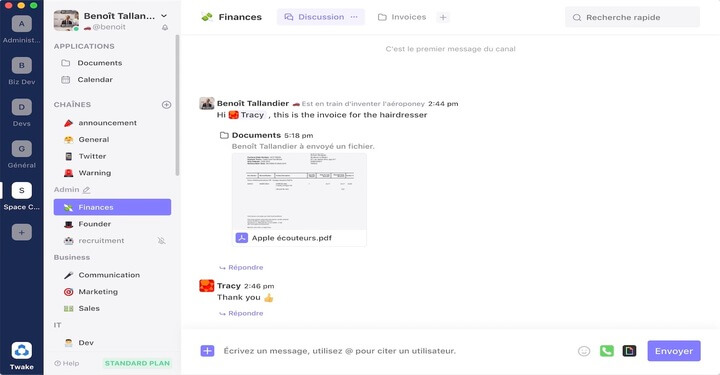Twake – A Modern Open-Source Collaboration Platform



Twake is a modern open-source collaborative workspace that allows you to keep all of your data in one centralized location and to manage your projects using a single UI that features integrated support for all your favourite collaborative tools.
Its beautiful user interface offers a rich user experience that is easy to get accustomed to whether you use it for chatting with your team, managing tasks, managing events using its calendar, or storing files.
There is modern-styled online documentation to assist developers and users in having the best possible experience, and an external collaborator feature that allows for specialized discussion channels where Twake members and non-members can collaborate on projects simultaneously. Best of all, you can use it for free, subscribe to its paid plan, or host it yourself just like you would OwnCloud and NextCloud.
-

- Login or register to post comments
 Printer-friendly version
Printer-friendly version- 2307 reads
 PDF version
PDF version
More in Tux Machines
- Highlights
- Front Page
- Latest Headlines
- Archive
- Recent comments
- All-Time Popular Stories
- Hot Topics
- New Members
digiKam 7.7.0 is released
After three months of active maintenance and another bug triage, the digiKam team is proud to present version 7.7.0 of its open source digital photo manager. See below the list of most important features coming with this release.
|
Dilution and Misuse of the "Linux" Brand
|
Samsung, Red Hat to Work on Linux Drivers for Future Tech
The metaverse is expected to uproot system design as we know it, and Samsung is one of many hardware vendors re-imagining data center infrastructure in preparation for a parallel 3D world.
Samsung is working on new memory technologies that provide faster bandwidth inside hardware for data to travel between CPUs, storage and other computing resources. The company also announced it was partnering with Red Hat to ensure these technologies have Linux compatibility.
|
today's howtos
|









.svg_.png)
 Content (where original) is available under CC-BY-SA, copyrighted by original author/s.
Content (where original) is available under CC-BY-SA, copyrighted by original author/s.

Collaboration Platform “Twake” To Give 6 Months Free Access
Collaboration Platform “Twake” To Give 6 Months Free Access to First 10,000 Enterprises